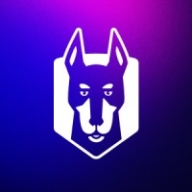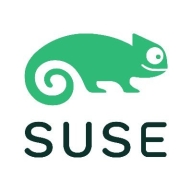

Snyk and SUSE NeuVector are contenders in the cybersecurity space, focusing on container and software security solutions. Snyk takes the lead due to its developer-centric approach, extensive integrations, and impressive vulnerability management.
Features: Snyk excels in ease of use and integration with platforms like Slack, providing a self-service model that is developer-friendly. Its accurate vulnerability database and container security allow developers to identify and address vulnerabilities in real-time. Conversely, SUSE NeuVector offers robust run-time security and extensive network scanning, enhancing container and client security with effective node and network vulnerability scanning.
Room for Improvement: Snyk can benefit from adding SAST and DAST capabilities, optimizing runtime analysis, and supporting additional programming languages. Its notification system's precision also needs enhancement. SUSE NeuVector should broaden its infrastructure scanning and improve its image-scanning features, potentially enhancing its security suite offerings.
Ease of Deployment and Customer Service: Snyk demonstrates deployment flexibility across private to hybrid clouds, albeit with potential complexity in certain IDE integrations. Its customer service is generally positive, supported by clear documentation and proactive teams, though some experiences vary. SUSE NeuVector provides dependable technical support with quick, knowledgeable responses, yet could improve tool integration ease.
Pricing and ROI: While Snyk's pricing may appear high, it offers substantial value with detailed insights, boosting developer productivity and ROI. Its pricing based on committers might surprise non-coding users with unexpected charges. SUSE NeuVector provides cost-effective solutions, particularly through its open-source form, with additional support costs. Both solutions offer features that reduce problem resolution costs and enhance security efficiency.
| Product | Market Share (%) |
|---|---|
| Snyk | 5.4% |
| SUSE NeuVector | 2.2% |
| Other | 92.4% |


| Company Size | Count |
|---|---|
| Small Business | 20 |
| Midsize Enterprise | 9 |
| Large Enterprise | 21 |
| Company Size | Count |
|---|---|
| Small Business | 5 |
| Midsize Enterprise | 1 |
| Large Enterprise | 2 |
Snyk excels in integrating security within the development lifecycle, providing teams with an AI Trust Platform that combines speed with security efficiency, ensuring robust AI application development.
Snyk empowers developers with AI-ready engines offering broad coverage, accuracy, and speed essential for modern development. With AI-powered visibility and security, Snyk allows proactive threat prevention and swift threat remediation. The platform supports shifts toward LLM engineering and AI code analysis, enhancing security and development productivity. Snyk collaborates with GenAI coding assistants for improved productivity and AI application threat management. Platform extensibility supports evolving standards with API access and native integrations, ensuring comprehensive and seamless security embedding in development tools.
What are Snyk's standout features?Industries leverage Snyk for security in CI/CD pipelines by automating checks for dependency vulnerabilities and managing open-source licenses. Its Docker and Kubernetes scanning capabilities enhance container security, supporting a proactive security approach. Integrations with platforms like GitHub and Azure DevOps optimize implementation across diverse software environments.
SUSE NeuVector is a full lifecycle container security solution that helps your organization secure its container infrastructures, manage Kubernetes security risks, and block threats. The NeuVector continuous container security and compliance platform simplifies data protection from pipeline to production, enforces compliance, and provides complete visibility and automated controls for protection against known and unknown threats. In addition, NeuVector is the only Kubernetes-native container security solution that offers a comprehensive risk profile of known vulnerabilities and also delivers immediate protection from all vulnerabilities.
SUSE NeuVector Features
SUSE NueVector has many valuable key features. Some of the most useful ones include:
SUSE NeuVector Benefits
There are many benefits to implementing NeuVector. Some of the biggest advantages the solution offers include:
Reviews from Real Users
A Platform Solution Architect at a tech services company says, “The solution is feature-rich, easy to set up, and has good support.”
We monitor all Container Security reviews to prevent fraudulent reviews and keep review quality high. We do not post reviews by company employees or direct competitors. We validate each review for authenticity via cross-reference with LinkedIn, and personal follow-up with the reviewer when necessary.